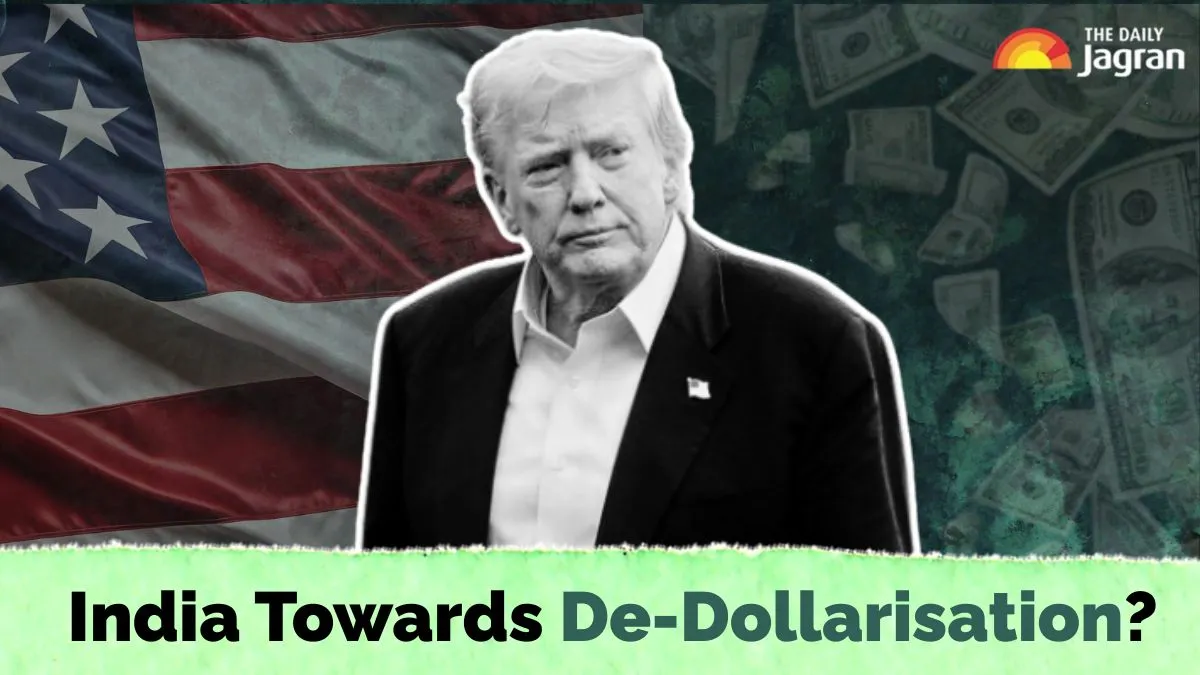- By Supratik Das
- Tue, 19 Aug 2025 04:30 PM (IST)
- Source:JND
In a major policy shift with global consequences, the Reserve Bank of India (RBI) has “quietly” taken one of its significant steps yet towards de-dollarisation. The crucial step marked a major setback for US President Donald Trump, who warned BRICS nations over de-dollarisation. On August 5, 2025, in Circular No. RBI/2025-26/71, the central bank said that Indian banks can now open Special Rupee Vostro Accounts (SRVAs) for foreign banks directly, without waiting for prior RBI sanction. This little change could have huge ripple effects for global trade. Notably, SRVA is a facility to settle international trade transactions in Indian Rupees. Introduced in 2022, the mechanism allows exporters and importers to invoice and settle trade directly in rupees.
From 6 Weeks To 24 Hours
Until now, banks had to wait nearly six weeks to get the RBI’s green signal for each SRVA. Under the new system, Category-I Authorised Dealer (AD) banks, primarily large Indian banks licensed to deal in foreign exchange, can open these accounts within 24 hours for their partner foreign banks,provided they meet KYC, AML, and CFT safeguards under FEMA, 1999, and PMLA, 2002. “By removing the approval requirement, we have enabled faster trade settlement mechanisms in rupees. This reform is in line with our larger goal of promoting INR as a preferred settlement currency in cross-border trade,” an RBI official told The Hindu Business Line.
SRVAs Boost India’s Way of building a parallel trade highway outside the US dollar system. Under this system, introduced in July 2022 under A.P. (DIR Series) Circular No. 10.
• If an Indian importer buys from a foreign partner, payment is made in rupees and credited to the SRVA of that partner’s bank in India.
• If an Indian exporter sells abroad, they get their payment in rupees directly from the SRVA.
Hence, there is no need for USD or any third-currency conversion, meaning trade can be settled fully in rupees. The adoption has been growing steadily. According to Business Standard, more than 80 SRVAs are already operational in more than 20 countries— including Russia, UAE, Sri Lanka, Mauritius, Singapore, Malaysia, Botswana, and Fiji. Since launch, trade worth Rs 1.34 lakh crore (around USD 16 billion) has been settled in rupees. Experts cited by Business Standard suggest that if even 10 per cent of India’s annual foreign trade, valued at about USD 800 billion, shifts to rupee settlement, nearly USD 80 billion worth of transactions could bypass the dollar entirely.
Why This Matters Now?
India sits at a fascinating crossroads, a Quad ally with the US, Japan, and Australia, but also a BRICS partner trading heavily with Russia and China. By propelling INR trade settlements, New Delhi is forging financial independence, a method of trading freely without taking sides in a dollar-led world. While speaking to Bloomberg, Radhika Rao economist of DBS Bank, said, “India has effectively built a dollar-bypass highway. This strengthens India’s positioning in global trade, particularly with countries facing sanctions or dollar liquidity issues.”
For India, there are several benefits, such as:
• Quicker deals: Settlements can now occur in hours rather than weeks.
• Lower costs: The USD conversion costs are reduced to zero for both importers and exporters.
• Tighter trade links: Partner nations willing to take INR find Indian exports more affordable.
ALSO READ: India Continues Oil Trade With Russia Despite 50% US Tariff On Indian Goods
Dollar Still Dominant?
Despite this trend, the dollar remains the world’s dominant trade and reserve currency. The Bank for International Settlements (BIS) survey (2022) showed that the dollar is involved in 88 per cent of global forex trades. On the other hand, the BIS locational banking statistics confirm that 55 per cent of international loans and 60 per cent of cross-border deposits are still dollar-denominated.
But simultaneously with large forex reserves exceeding USD 650 billion and a growing presence in global supply chains, the Indian rupee is being increasingly seen as a viable settlement currency. Thus, this August 2025 circular is more than just a bureaucratic reform. It is a calculated step towards currency independence and a deliberate signal that India wants the rupee to be recognised beyond its borders.

